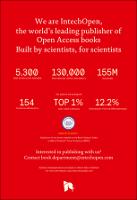Chapter HSE Management for a Sound Work Environment: Strategies for Improving Health Safety and Environmental Indicators through Ergonomic Design Thinking
Author(s)
Santos, Marcello Silva e
Fonseca, Maria da Conceição Vinciprova
Soares, Marcelo Marcio
Fonseca, Bernardo Bastos da
Aguilera, Maria Victoria Cabrera
Fernandes, Ananda Halfeld Alves
Language
EnglishAbstract
The environmental effect of ground-borne vibration and noise generated by urban rail transit systems is a growing concern in urban areas. This chapter reviews, synthesizes and benchmarks new understandings related to railway vibration and associated airborne and ground-borne noise. The aim is to provide new thinking on how to predict noise and vibration levels from numerical modelling and from readily available conventional site investigation data. Recent results from some European metropoles (Brussels, Athens, etc.) are used to illustrate the dynamic effect of urban railway vehicles. It is also proved that train type and the contact conditions at the wheel/rail interface can be influential in the generation of vibration. The use of noise-mapping-based results offers an efficient and rapid way to evaluate mitigation measures in a large scale regarding the noise exposure generated to dense urban railway traffic. It is hoped that this information may provide assistance to future researchers attempting to simulate railway vehicle vibration and noise.
Keywords
structural vibration, railway vibration, environmental noise, vibration assessment, measurement, standards, human effect, building simulation, noise mapping, LRTDOI
10.5772/66650Publisher
InTechOpenPublisher website
https://www.intechopen.com/Publication date and place
2017Classification
Transport technology & trades


 Download
Download